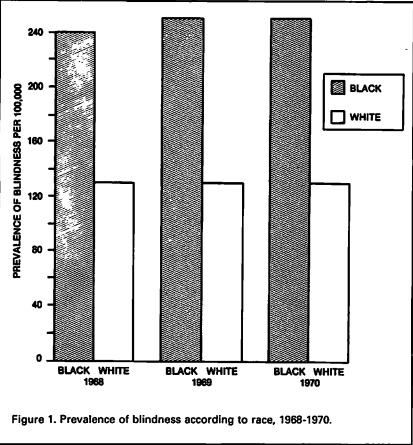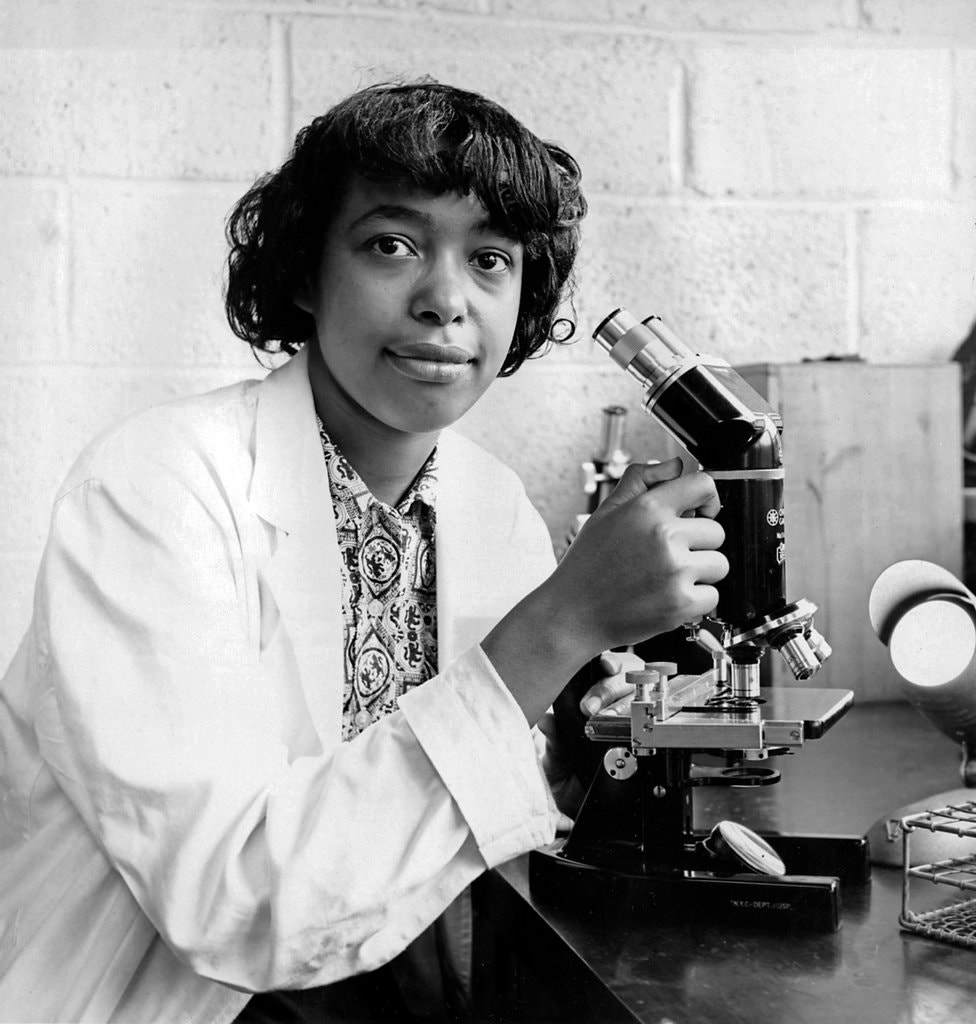African Americans Recieve Less Eye Care
After finishing college in 1968, Patricia Bath began to intern at Harlem Hospital in New York. In 1969, she started a fellowship at Columbia University. During her fellowship, she worked at the Columbia Eye Clinic. While treating patients, Bath noticed that the blindness rates were very different between Harlem and Columbia. Harlem Hospital contained many African American patients. Here, almost half of the patients faced visual impairment or blindness. On the other hand, Columbia had a significantly lower amount of blind patients, but also a significantly lower number of African American patients. By conducting a retrospective epidemiological study, a study that looks back on events to conduct research in the medical field, she was able to research and document the problem. She concluded that the rate of blindness was nearly double among African Americans than among whites due to lack of eye care.

The graph shows the rate of blindness among blacks, grey, compared to whites in the years 1968 through 1970. (Patricia, Bath Era)

